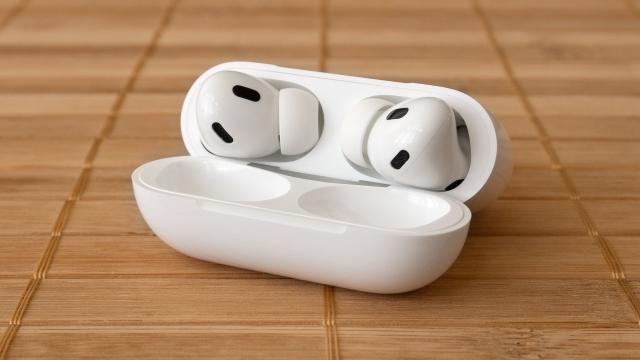It’s estimated that by the year 2060, the number of Australians dealing with hearing loss will double, which is especially concerning because currently only about 25% of older adults who would benefit from a hearing aid actually have access to or are willing to use the expensive hardware. They’re not a perfect alternative, but a new study has found that Apple’s wireless earbuds can serve as a more affordable and accessible sound amplification device.
Over-the-counter hearing aids will hopefully help make these devices more accessible — at least in Australia — but based on the handful of companies who have already announced OTC sound amplification devices, these will potentially still cost well over $1,000. They also don’t address other issues that have hindered hearing aid adoption, including social stigmas with the devices being associated with older people.
Inspired by a feature called Live Listen released in 2016 by Apple, which allows an iPhone or iPad to be used as sound-boosting microphone, researchers from the Taipei Veterans General Hospital wondered whether the performance of AirPods 2 and the original AirPods Pro using this feature could compare to medical hearing aids. Apple does not position Live Listen as a tool for those dealing with hearing loss but as a way for users with normal hearing to boost desired sounds, like the calls of a bird. However, the researchers found that, in some situations, consumer-level personal sound amplification products faired quite well against pricier medically prescribed solutions, and given the popularity of products like Apple’s AirPods, there’s no stigma associated with wearing them.
The researchers tested the $AU219 AirPods 2 and $AU399 AirPods Pro paired with iPhone XS Max smartphones running iOS 13. They compared these against the $US10,000 OTICON Opn 1 behind-the-ear hearing aids and a more affordable alternative, the $US1,500 Bernafon MD1. The four options were tested with 21 participants dealing with mild to moderate hearing loss, who were asked to repeat short sentences read to them by the researchers in varying environments.
In a quiet setting, the AirPods Pro were found to perform as well as the cheaper hearing aids and almost as good as the premium model, while the Air Pods 2 performed the worst of all four tested devices but still helped participants hear what was being read to them more clearly than not using a sound-enhancing device at all. In a noisy environment, the AirPods Pro performed even closer to the premium hearing aid model, thanks to their built-in noise cancellation, but only when the distracting noises were coming from the sides of the participant. When the noise was coming from the front, alongside the sample sentences being read by the researchers, both wireless earbud products failed to help improve what was being heard.
The research shows that there’s a good reason the hearing aid market wasn’t eliminated when wireless earbuds started to flood the market. The advanced microphones and speech-enhancing algorithms used in prescription hearing aid devices still outperform even earbuds with advanced noise cancelling capabilities in a wider variety of noisy environments. Hearing aids remain the best option for those dealing with hearing loss, but for those who don’t have access to them for whatever reason, a cheaper product like Apple’s AirPods Pro could provide noticeable improvements in hearing and clarity for those dealing with mild-to-moderate hearing loss and could serve as a useful alternative until over-the-counter solutions are more readily available and affordable.
